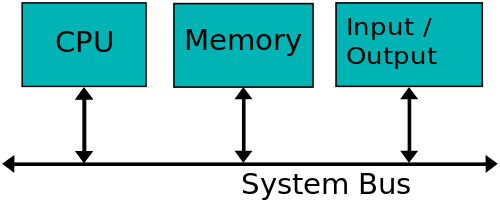#introductiontooperatingsystempptgalvin
Explore tagged Tumblr posts
Text
Introduction To Operating System Concepts

Introduction To Operating System Concepts - What Operating System Do? , Computer System Organisation, Operating System Operation, Definitions.


What Is an Operating System?
A Program (Or) A Software Which Acts As An Intermediary Between A User Of A Computer And The Computer Hardware.

Operating System Goals

To Execute User Programs To Make Solving User Problems Easier To Make The Computer System Convenient To Use To Use The Computer Hardware And Resources In An Efficient Manner Operating System Is A Manager That Need To Use All The Resources To Perform Management Duties.

User View
Extended Machine That Lower Level Details
System View
Resource Allocator
Definitions
Resource - Component Of A Limited Availability Necessary For Effective Operation Process - Active Program Dead Lock - A Situation In Which Two Or More Competing Actions Are Each Waiting For The Other To Furnish, And Thus Neither Ever Does. Buffer - Area Of Memory That Stores Data Cache - Area Of Fast Memory That Stores Copies Of Data what is the difference between cache and buffer? Buffer Is A Area Of Memory That Stores Data And Cache Is Area Of Fast Memory That Stores Copies Of Data. OS Kernel - Contains Basic Functions(one process active all the time) Everything Else Is Either A System Program(Ships With The Operating System) Or An Application Program. Interrupt - Change In Flow Of Execution, Operating Systems Are Interrupt Driven. Volatile Storage - Volatile Memory Is A Computer Storage That Only Maintains Its Data While The Device Is Powered, Most(Random Access Memory) Used For Primary Storage In Personal Computers Is Volatile Memory. Persistent/Non-Volatile Storage - Non- Volatile Storage Is A Type Of Computer Memory That Can Retrieve Stored Information Even After Having Been Power Cycled. In Contrast, Volatile Memory Needs Constant Power In Order To Retain Data.
Computer System Organisation
One Or More CPU's Device Controllers Connect Through Common Bus Providing Access To Shared Memory.

Concurrent Execution Of CPU's And Device Competing For Memory Cycles I/O Devices And The CPU Can Execute Concurrently Each Device Controller Is In Charge Of A Particular Device Type Each Device Controller Has A Local Buffer CPU Moves Data From/To Main Memory To/From Local Buffers I/O Is From The Device To Local Buffer Of Controller Device Controller Informs CPU That It Has Finished Its Operation By Causing An Interrupt
COMMON FUNCTIONS OF INTERRUPTS
Interrupt Transfers Control To The Interrupt Service Routine Interrupt Architecture Must Save The Address The Interrupted Instruction A Trap Or Exception Is A Software Generated Interrupt Caused Either By An Error Or A User Request Read the full article
#introductiontooperatingsystem#introductiontooperatingsystemanditsfuctions#introductiontooperatingsystembookpdf#introductiontooperatingsysteminhindi#introductiontooperatingsystemnotes#introductiontooperatingsystemnptel#introductiontooperatingsystempdf#introductiontooperatingsystemppt#introductiontooperatingsystempptgalvin#introductiontooperatingsystemtutorial#introductiontooperatingsystemudacity
0 notes
Text
Introduction To Operating System Concepts

Introduction To Operating System Concepts - What Operating System Do? , Computer System Organisation, Operating System Operation, Definitions.


What Is an Operating System?
A Program (Or) A Software Which Acts As An Intermediary Between A User Of A Computer And The Computer Hardware.

Operating System Goals

To Execute User Programs To Make Solving User Problems Easier To Make The Computer System Convenient To Use To Use The Computer Hardware And Resources In An Efficient Manner Operating System Is A Manager That Need To Use All The Resources To Perform Management Duties.

User View
Extended Machine That Lower Level Details
System View
Resource Allocator
Definitions
Resource - Component Of A Limited Availability Necessary For Effective Operation Process - Active Program Dead Lock - A Situation In Which Two Or More Competing Actions Are Each Waiting For The Other To Furnish, And Thus Neither Ever Does. Buffer - Area Of Memory That Stores Data Cache - Area Of Fast Memory That Stores Copies Of Data what is the difference between cache and buffer? Buffer Is A Area Of Memory That Stores Data And Cache Is Area Of Fast Memory That Stores Copies Of Data. OS Kernel - Contains Basic Functions(one process active all the time) Everything Else Is Either A System Program(Ships With The Operating System) Or An Application Program. Interrupt - Change In Flow Of Execution, Operating Systems Are Interrupt Driven. Volatile Storage - Volatile Memory Is A Computer Storage That Only Maintains Its Data While The Device Is Powered, Most(Random Access Memory) Used For Primary Storage In Personal Computers Is Volatile Memory. Persistent/Non-Volatile Storage - Non- Volatile Storage Is A Type Of Computer Memory That Can Retrieve Stored Information Even After Having Been Power Cycled. In Contrast, Volatile Memory Needs Constant Power In Order To Retain Data.
Computer System Organisation
One Or More CPU's Device Controllers Connect Through Common Bus Providing Access To Shared Memory.

Concurrent Execution Of CPU's And Device Competing For Memory Cycles I/O Devices And The CPU Can Execute Concurrently Each Device Controller Is In Charge Of A Particular Device Type Each Device Controller Has A Local Buffer CPU Moves Data From/To Main Memory To/From Local Buffers I/O Is From The Device To Local Buffer Of Controller Device Controller Informs CPU That It Has Finished Its Operation By Causing An Interrupt
COMMON FUNCTIONS OF INTERRUPTS
Interrupt Transfers Control To The Interrupt Service Routine Interrupt Architecture Must Save The Address The Interrupted Instruction A Trap Or Exception Is A Software Generated Interrupt Caused Either By An Error Or A User Request Read the full article
#introductiontooperatingsystem#introductiontooperatingsystemanditsfuctions#introductiontooperatingsystembookpdf#introductiontooperatingsysteminhindi#introductiontooperatingsystemnotes#introductiontooperatingsystemnptel#introductiontooperatingsystempdf#introductiontooperatingsystemppt#introductiontooperatingsystempptgalvin#introductiontooperatingsystemtutorial#introductiontooperatingsystemudacity
0 notes